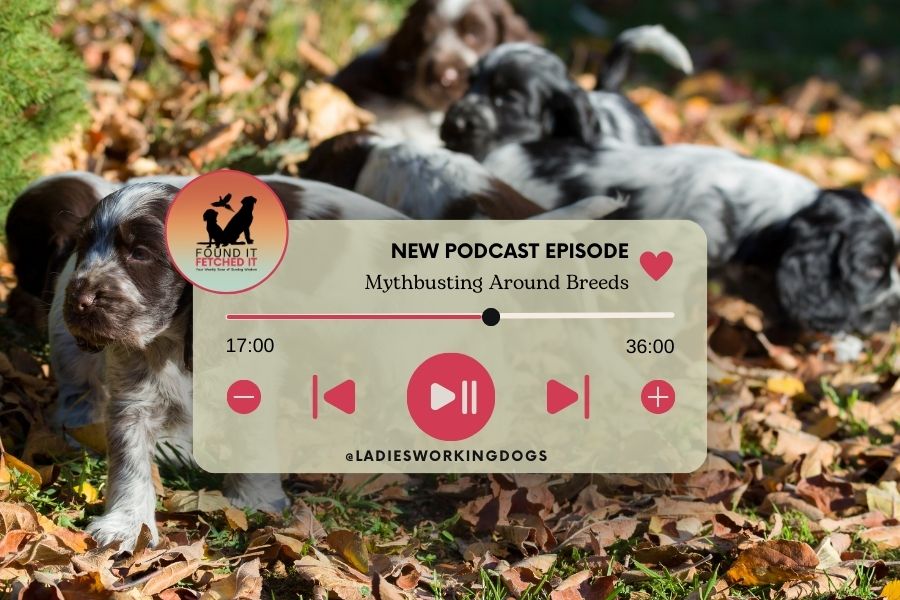In this week’s exploration on Found it, Fetched it, we tackle a subject close to many dog owners’ hearts: why do our dogs act perfectly when close but turn a deaf ear when distance is involved? I had the pleasure of discussing this complex issue of distance with LWDG Group Expert Claire Denyer, to unravel the mysteries of canine behaviour from near and far.
Podcast Edition:
 The Challenge of Distance in Dog Training
The Challenge of Distance in Dog Training
“Dogs can behave perfectly well when they’re near us but become seemingly oblivious to commands at a distance,” Claire begins. This common challenge is something many of our members face and is a multifaceted issue depending on whether a dog is too clingy or overly independent.
Dealing with Clingy Dogs Who Won’t Work at Distance
For the velcro dogs that never want to leave your side, establishing a command like stay or a stop whistle at a distance can be particularly tough. “These dogs have what might be seen as visual separation anxiety. They struggle with staying away because they’re unsure about being separated from their handlers,” Claire explains. The solution? “Build the duration of stay gradually before introducing more space between you and your dog. Ensure they’re comfortable with the shorter distance first.”
Addressing Overly Independent Dogs Who Ignore At Distance
Conversely, dogs that cherish their independence might ignore commands when out of arm’s reach. “They don’t see the value in responding to a distant call,” says Claire. To counter this, she recommends starting with smaller distances, using plenty of positive reinforcements, and only gradually increasing the separation as your dog learns that listening pays off, even from afar.
Continues below….

Subscribe To Found It, Fetched It Today
The Impact of Environmental Distractions On Distance
Distractions such as intriguing smells or a new environment can make training at distances harder. Claire stresses the importance of consistency and repetition: “Help your dog focus amidst distractions by reinforcing commands and using cues effectively. It’s all about making your instructions clear and rewarding enough to trump the environmental lures.”
Knowing When to Get Help
Sometimes, despite best efforts, professional help may be needed, especially when simple corrections fail to address the behaviour effectively. “It’s important to find a trainer who looks beyond the symptoms to the underlying causes of your dog’s behaviour,” advises Claire. This approach ensures that solutions are not just temporary fixes but are tailored to foster long-term behavioural improvements.
Words of Encouragement
Claire wrapped up our discussion with some motivating advice: “Training isn’t just about increasing the physical distance but also about building trust and understanding between you and your dog.” She encourages all dog owners to be patient, to celebrate small victories, and to see each training session as an opportunity to strengthen their bond.
This enlightening conversation has been a treasure trove of strategies for anyone looking to enhance their dog’s obedience, regardless of the proximity. Whether your canine companion clings like a shadow or prefers a bit more independence, understanding and adjusting your training approach can make a world of difference.
Listen to the full podcast episode here!
What’s Your Gundog Goddess Style?
Who’s ready for some extra fun? Discover your unique approach to training with our “Which Gundog Goddess Are You?” quiz. You don’t want to miss this one































